Fudd Friday: Bring Back Pump-Action Rifles

I’m sick and tired of bolt-action rifles, and we definitely don’t need more straight pulls. What we need is more pump-action rifles like the Remington 760 and Savage 170. Let’s explore the history of these practical, but forgotten rifles and why manufacturers need to bring them back.
Classic hunting rifles @ TFB:
- TFB Review: Hornady .25-35 Winchester LEVERevolution – Antique Friendly Firearm Fuel
- The Rimfire Report: Fixing My Dad's Marlin Model 60
- TFB Armorer's Bench: Commentary on the Remington 74 Series
- POTD: The Great Model 8
Pump-action rifle history
People think that in the late 1800s, America built nothing but lever actions with the odd falling block or revolving carbine thrown into the Wild West mix. But as far back as 1884, Colt had its Lightning pump-action rifle, first chambered in pistol-caliber cartridges just like Winchester’s popular lever guns, and eventually expanding to cover a range from .22LR to .50-95 Express, if you can believe the Internet. Colt’s total production of Lightning pump actions nearly hit the 200,000 mark over a 20-year run, which was pretty significant in that era.
By the 1890s, other manufacturers were catching on to the advantages of pump-action rifles. John Browning designed the Model 62 pump-action rimfire rifle for Winchester. In the years before and after World War I, Savage, Remington and Marlin all made similar .22 rifles (sometimes they were called trombone or slide actions, or gallery guns, since they were popular in shooting galleries). And as Winchester solidified its base in the centerfire lever gun market, with Savage and Marlin cornering the rest of that market, Remington tried other ideas—like the excellent semi-auto Model 8 and Model 81 hunting rifles, and the Model 14 Model 141 and Model 14 ½ series.
These Remington pump guns used weird twisted tube mags under the barrel intended to allow them to use spitzer bullets without any danger of the tips impacting the primer of the next cartridge loaded. They were chambered in Remington’s proprietary loads (.25 Remington, .30 Remington, .32 Remington, and .35 Remington) because that’s how the industry worked back then—Remington wanted ammo sales as well as rifle sales, and they also wanted rimless designs for the Model 14 action anyway. In reality, these cartridges were pretty close to Winchester’s designs (the .30 Remington is basically a rimless .30-30, just like the .303 Savage is almost identical to the .30-30). Later, the Model 14 ½ also came in the popular .44-40 and .38-40.
Despite military and police sales on top of the hunting market, these early pump-action Remingtons were never as popular as the lever-actions of their time period, but they still made and sold tens of thousands of them up through the end of production in 1950. They were fast-handling guns and well-made, but limited to lower-powered cartridges and not really intended for mounting a scope. As Remington rebuilt its lineup in the years after World War II, they ditched this John Pedersen design and went with the modern Model 760 in 1952, with a rotating bolt head and receiver that appeared to be inspired by the Model 870 shotgun.
The Model 760 was a massive upgrade. It could handle a wide range of cartridges, from the old reliable .35 Remington to much more powerful loads like .30-06 Gov’t or .270 Winchester, or the then-new .308 Winchester. The 760 came drilled and tapped for scope mounts from a very early date in production and was designed for modern manufacturing processes.
Over the late 1970s, Remington switched to the Model 6 and Model 7600 series, and continued to build the 7600 (with some slight changes to the action, mostly to the locking system) right up until their financial problems gained steam around 2019. Since the company went bankrupt, we’ve heard no talk about it coming back.
While the Remington pumps are the pump-action rifles that everyone knows about, there was one competing offering in the hunting market of the 1970s and 1980s. The Savage 170 was a more affordable pump-action, with a design adapted from their Model 67 pump-action shotgun. The Savage came with an under-barrel tube mag just like a shotgun, and a tang safety. As far as I know, they all came from the factory drilled and tapped for scope mounts; mine came with iron sights as well.
These rifles were only available in .30-30 and .35 Remington, and were therefore competing with Fuddware like the Winchester 94 AE or Marlin 336 at that time period. Some people really liked the Savage; other people had issues with them. I was in the latter camp.
Now, in 2025, the only pump-action rifles I know of in production are wannabe ARs like the Troy PAR or Taipan X, and Pedersoli’s Colt Lightning reproductions. For a while, the IMI Timber Wolf offered high-quality pump-action firepower in pistol-caliber cartridges, but it’s been out of production for years.
What makes a pump-action so great?
The main appeal behind pump-action rifles is a promise of rapid-fire capability without malfunctioning due to weather or mechanical problems. Hunters in the northeast (the Benoits, Hal Blood, just about anyone involved in the Big Woods Bucks scene) like having a high-powered round like .270 or .30-06 on-tap without worrying about their rifle jamming due to cold December ice and snow.
A lot of these guys have customized peep sights on their Remington pumps, building their guns for shots at 200 yards or closer in the forests of northern Maine or the Adirondacks. All these guys have stories of how they managed to knock down a running deer with quick follow-up shots from their pump gun, and they also have stories of how a semi-auto froze up on them when they needed it most.
My own Remington 760 functioned with no issues during the short time I had it, but the Savage 170 I owned was as much a jam-o-matic as any Remington 742. It’s too bad, because I loved the rifle otherwise and would like to find another. I found the 170 was very accurate considering its budget-friendly build, and that’s something that many 760/7600 owners have also said. In an age when many hunting rifles didn’t come from the factory with free-floated barrels, the old Remington pumps did, and they gained an advantage that way.
Nowadays, an el-cheapo budget rifle comes with a free-floated barrel and pump rifles have lost the advantage, but they still shoot as well as ever—perfectly fine for the distances that almost all deer and bear are shot at. And they’re still a lot faster to shoot a follow-up shot than a bolt-action, whether it’s a straight pull or not.
If you’ve done a lot of duck hunting, you know that someone who knows what they’re doing can fire a pump-action nearly as fast as a semi-auto. You also know that the pump action easily allows you to stay on target with your front hand following the target as you work the action. And you know that bolt-action shotguns basically don’t exist in the waterfowl world, because they’re so much slower to shoot.
So why, then, do the manufacturers ignore this perfectly sensible design and focus on straight-pull rifles?
I have a few theories. First, I think they make bolt-action rifles because that’s what people think they need. Every modern hunting rifle’s marketing material is an increasingly eye-rolling description of marksmanship potential from a firearm that will probably never be used anywhere near its potential—most hunters are probably not practicing enough to reach that potential.
It’s also because hunting itself has changed. Fifty years ago, deer drives, tracking, still hunting, and other tactics were far more likely to leave you shooting at a moving deer. Today, people want to sit in one place and watch a field, or a feeder. In those scenarios, you’re less likely to need that quick follow-up shot anyway.
I’m sure that the complicated patchwork of Europe’s firearms laws also makes a difference. If a manufacturer wants to sell its guns everywhere, then a universally-legal action makes sense. Gun laws are tightening worldwide, so why invest in pump actions that could be banned next year, when a straight-pull is almost certainly cheaper to design and manufacture, and will probably face less legal hassle?
And finally: Just as lever guns are seen as an American innovation that snooty Euro hunters are rarely interested in, so it goes with pump-action rifles. Even if they were legal, many European hunters would prefer something like a Blaser R8 over a Remington 7600 because that’s what they use over there.
Why we need pump-actions in 2025
But I think that’s no reason we can’t and shouldn’t make pump-actions here in North America. With silly local restrictions constantly putting semi-auto rifles in danger, I think it’s prime time to bring pumps back—and if they were good enough for the FBI’s tactical teams once upon a time, I’m pretty sure you can defend your homestead just fine with one. These are good for more than deer hunting.
The other big reason? It’s because a lot of North America’s hunters aren’t just in it for “free meat” or the chance to dress up in matching camo with their buddies. Hunting is a very tradition-focused activity here, and we see that backed up with massive interest in lever-action rifles these days. Manufacturers should take that to the next level and offer pump actions similar to the rifles that offered an alternative throughout the 20th century. The features that made them desirable then will make them desirable today, especially to hunters and shooters who want to remember the good times of the past.

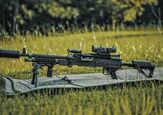
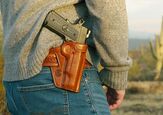

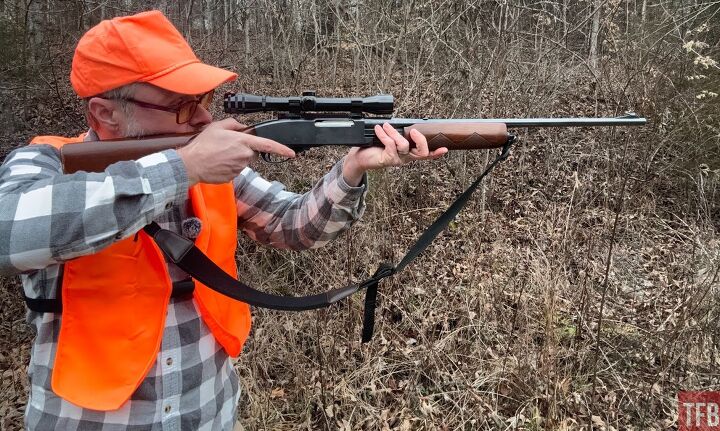











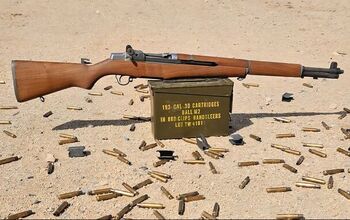






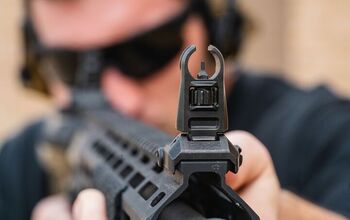


![[SHOT 2025] Radical Defense: Silencers For Cheytac And More](https://cdn-fastly.thefirearmblog.com/media/2025/01/28/22531/shot-2025-radical-firearms-silencers-for-cheytac-and-more.jpg?size=350x220)

![[SHOT 2025] What Do You Want to See?](https://cdn-fastly.thefirearmblog.com/media/2025/01/13/16081/shot-2025-what-do-you-want-to-see.jpg?size=350x220)
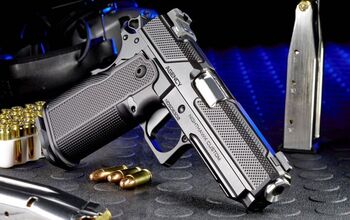

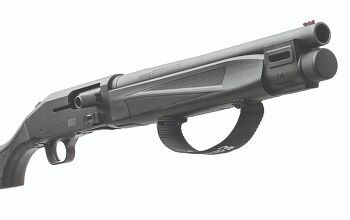
Comments
Join the conversation
Have a couple of 7600s, very accurate. Would love to have one in 6.5 Creedmore.
Here, in Australia, pump action rifles are very popular-mainly because of our restrictive gun laws.